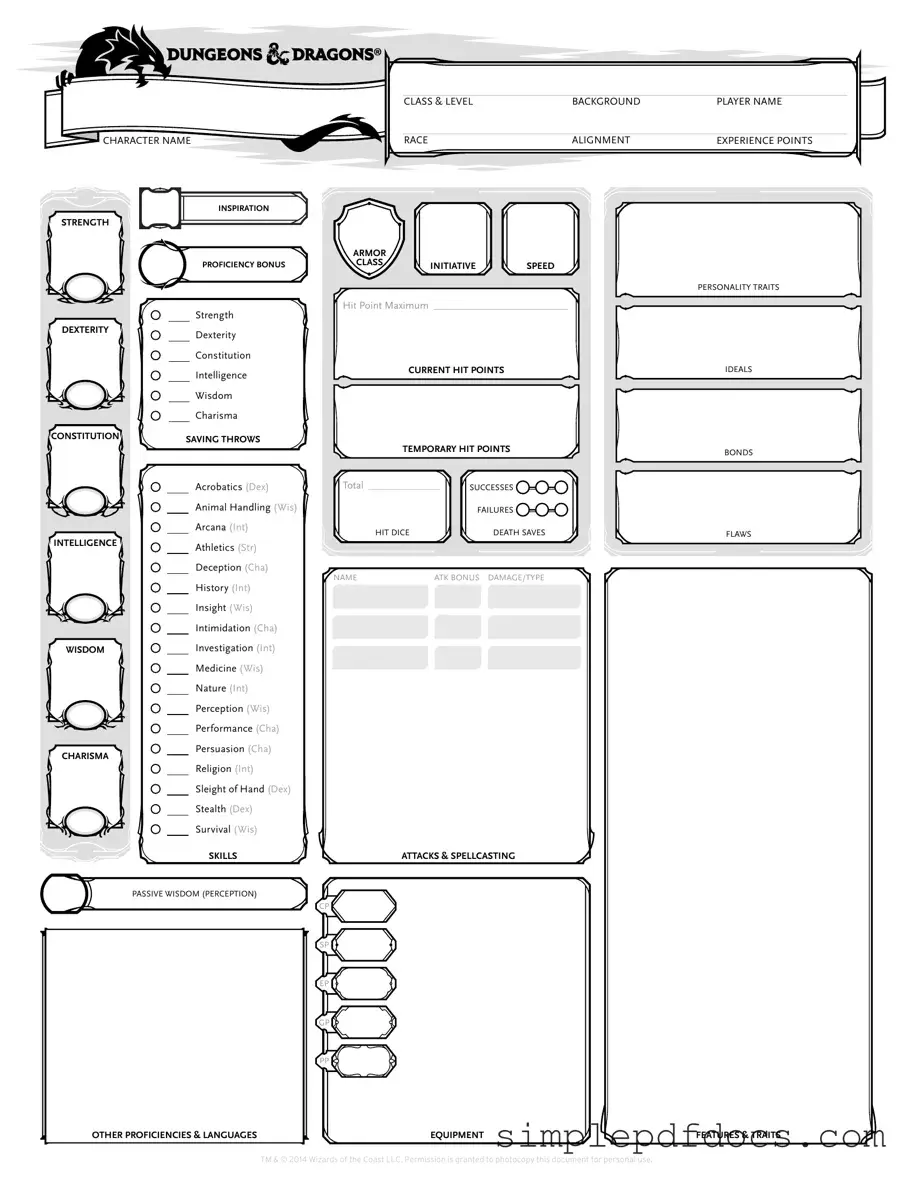The Dungeons & Dragons (D&D) character sheet serves as a crucial tool for players, encapsulating the essence of their characters within the game. This form includes various sections that detail a character's abilities, skills, and background, allowing players to track their progress and make informed decisions during gameplay. At its core, the character sheet features attributes such as strength, dexterity, and intelligence, which influence a character's performance in various scenarios. Additionally, players can record important information about their character's race, class, and alignment, which shape their role within the game world. The sheet also provides space for spells, equipment, and hit points, ensuring that players have a comprehensive view of their character's capabilities. By organizing this information in a structured manner, the D&D character sheet not only enhances gameplay but also fosters creativity and storytelling, making it an indispensable resource for both novice and experienced players alike.
